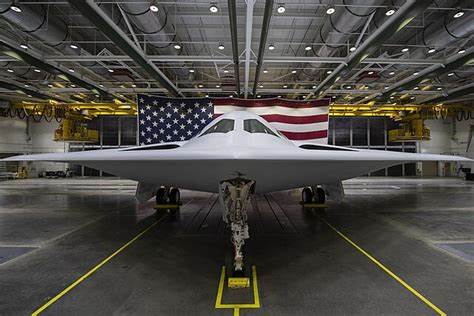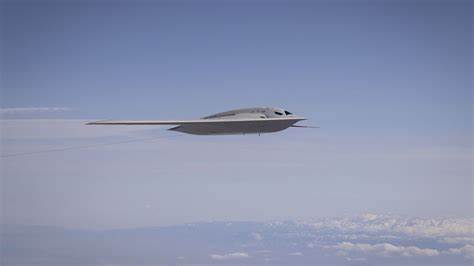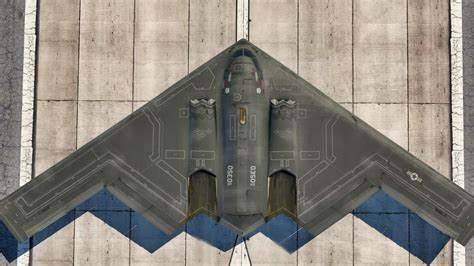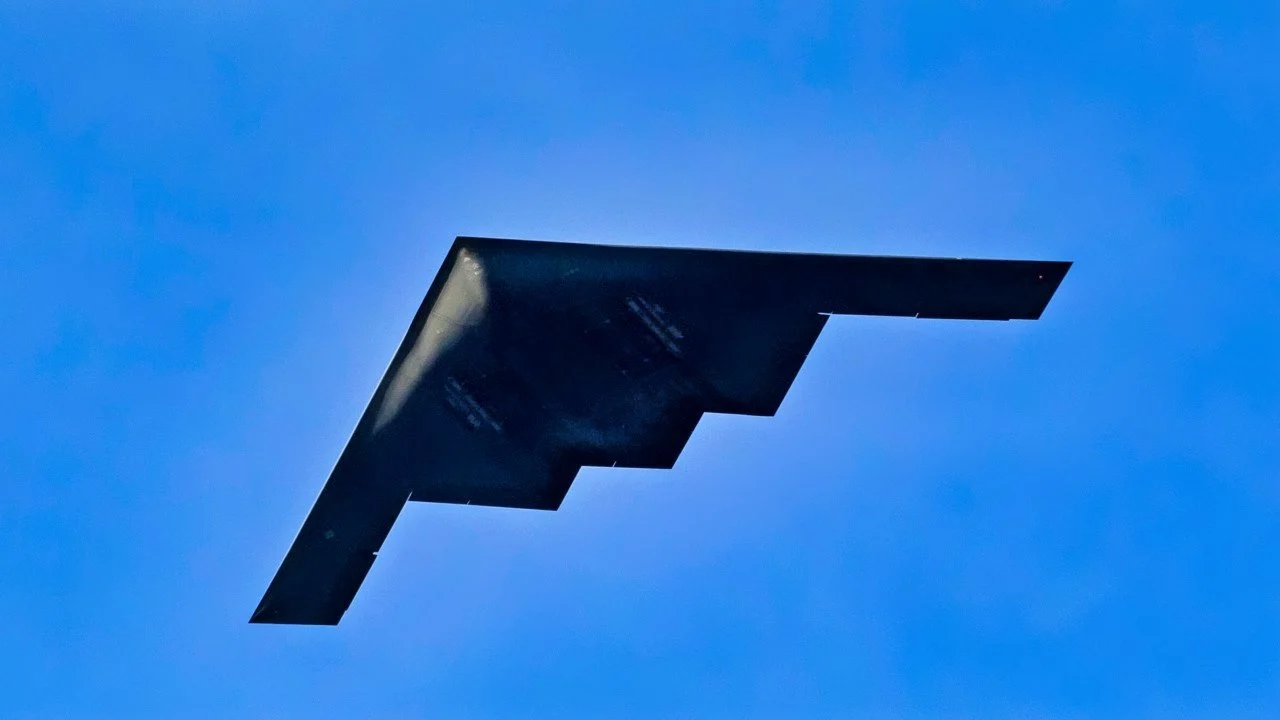
As the sun dipped below the horizon at the Air Force’s Plant 42 in Palmdale, California, an audience brimming with anticipation witnessed a historic moment in military aviation: the public unveiling of America’s newest nuclear stealth bomber, the B-21 Raider.

This milestone represents a significant leap forward in the United States’ strategic arsenal, with the Pentagon confirming the start of production of what is set to be a formidable force in aerial warfare.

The B-21 Raider, designed by Northrop Grumman Corp., is not only the first new American bomber aircraft in over three decades but also a testament to the nation’s ongoing commitment to maintaining a cutting-edge military edge in an increasingly complex global security environment.

Under Secretary of Defense for Acquisition & Sustainment William LaPlante articulated the essence of the program: “Production of the B-21 ‘Raider’ stealth bomber is moving forward… designing for production from the start — and at scale — to provide a credible deterrent to adversaries.”

With advanced integration of data, sensors, and weapons, the B-21 is celebrated as the world’s first sixth-generation aircraft by Northrop Grumman.

It promises rapid upgradability to outpace evolving threats, a feature that underscores the ever-adaptive nature of military technology. The airframe, while bearing a resemblance to the iconic B-2 Spirit, diverges significantly once you look beneath the surface.

Kathy Warden, CEO of Northrop Grumman, highlights this evolution: “The way it operates internally is extremely advanced compared to the B-2, because the technology has evolved so much.”

Low observability is a hallmark of the Raider, an attribute Lloyd Austin, the Defense Secretary, underscores with emphasis: “Even the most sophisticated air defense systems will struggle to detect a B-21 in the sky.”

The stealth capabilities are bolstered by advances in electronic emissions control, potentially enabling the aircraft to spoof adversary radars, and new propulsion technologies.

The production announcement heralds a sense of urgency and adaptation, as the Pentagon shifts its focus from counterterrorism to potential conflicts with near-peer adversaries.

However, the sophistication of the B-21 Raider does not come without its concerns, particularly regarding cost. While the Air Force previously estimated an average cost of $550 million per bomber in 2010 dollars—approximately $753 million today—the actual spending remains undisclosed.

This opacity has raised eyebrows among government watchdogs, with Dan Grazier, a senior defense policy fellow at the Project on Government Oversight, noting, “It might be a big challenge for us to do our normal analysis of a major program like this.”

Despite concerns, the Air Force is resolute, planning to procure at least 100 of these stealth bombers and begin their service in the mid-2020s.

Unlike its predecessor, the Raider is slated to be slightly smaller than the B-2, enhancing its range, and with the extended range, as Austin put it, “it won’t need to be based in-theater. It won’t need logistical support to hold any target at risk.”

The B-21 Raider is named in honor of the daring 1942 Doolittle Raid over Tokyo, embodying the spirit of innovation and bravery. As it moves from its successful test flights at Edwards Air Force Base to low-rate initial production, the Raider stands as a symbol of America’s unwavering resolve to protect its interests and allies with the most advanced weapon systems ever developed.

